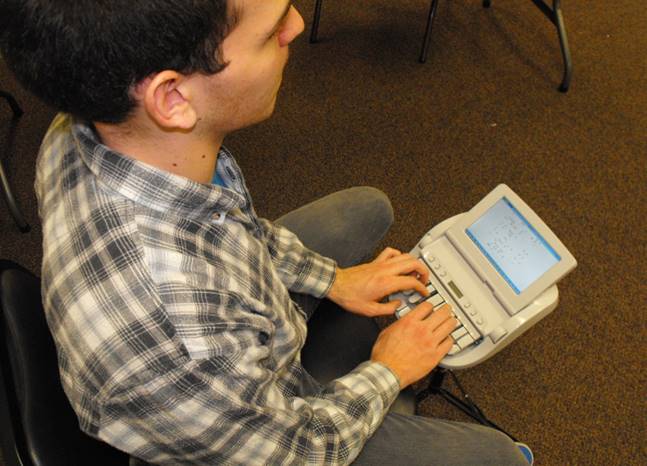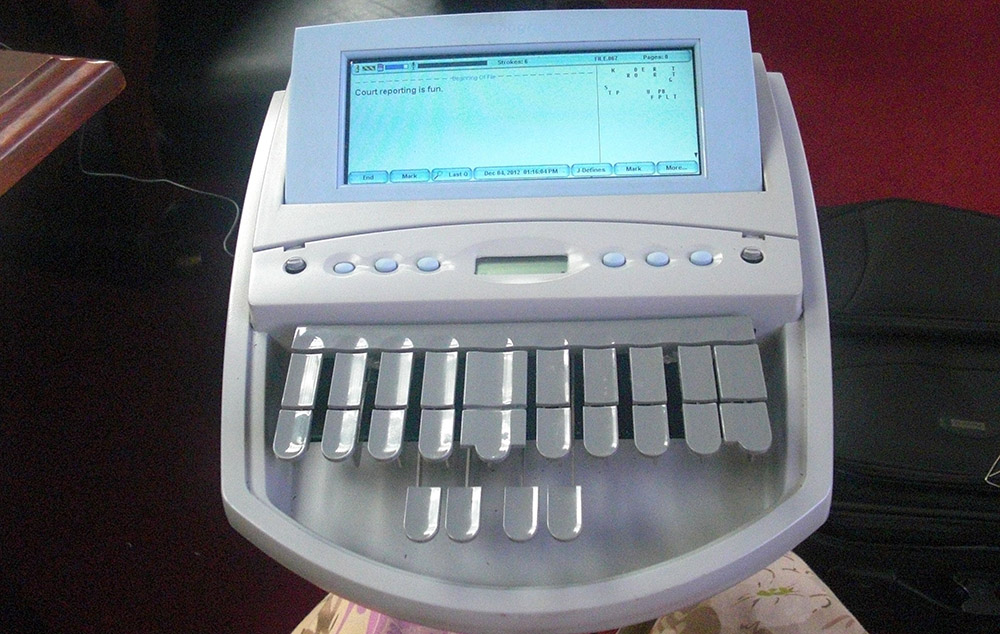The hidden Value of durham court reporting in Legal Systems
Everything About Court Coverage: Necessary Insights for Legal Professionals
Court reporting works as an essential part of the legal system, ensuring that procedures are properly documented. As modern technology advancements, the functions and tools of stenotype reporter are advancing. This change requires legal professionals to adapt to new methods and innovations. Understanding the ins and outs of court coverage can considerably affect situation outcomes. What necessary insights should legal specialists understand to browse this transforming landscape properly?
The Duty of Court Reporters in Legal Procedures
Stenotype reporter serve as the vital voice of the courtroom, recording every spoken word throughout lawful procedures with accuracy and precision. They record statements, legal arguments, and judges' rulings, making certain that a total record is maintained. This paperwork is essential for allures, offering a clear account of what taken place throughout tests and hearings. Court reporters have to possess remarkable listening abilities and a complete understanding of legal terms to promote accurate reporting. They often work under stress, requiring concentration and rate to equal the dialogue. Their records offer as main records, which can be referenced long after the process wrap up. Along with their transcription obligations, stenotype reporter may likewise supply real-time reporting, allowing judges and attorneys prompt access to the talked word. On the whole, their role is indispensable in supporting the integrity and transparency of the judicial process, adding especially to the legal profession.

Technology Changing Court Coverage
As modern technology developments, the landscape of court reporting is undertaking a substantial improvement, boosting the efficiency and precision of legal documentation. Digital devices such as real-time transcription software program allow court press reporters to provide prompt text output throughout process, permitting legal professionals to gain access to details instantaneously. In addition, remote reporting capabilities have actually emerged, promoting engagement from numerous places with safe video conferencing systems.
Expert system is likewise making strides, with algorithms with the ability of aiding in transcription processes and ensuring higher precision in capturing talked discussion. On top of that, cloud storage options give safe accessibility to case data, simplifying cooperation between attorneys and court press reporters.

These technical technologies not just enhance process however also decrease the possibility for human mistake, eventually contributing to a more reliable legal system. The assimilation of sophisticated modern technology right into court reporting is establishing new standards for accuracy and performance in lawful documents, reflecting the evolving demands of the occupation.
Ideal Practices for Working Together With Court Reporters
Effective collaboration with stenotype reporter is vital for guaranteeing accurate and timely lawful paperwork. Attorneys should initiate interaction early, providing reporters with appropriate case information, including names, days, and certain terminology. This foundational information allows reporters to prepare efficiently, lowering the probability of mistakes.
Furthermore, keeping open lines of communication during proceedings fosters an effective setting. When needed, legal professionals ought to encourage court reporters to look for or ask inquiries information. This method not only enhances precision yet likewise strengthens the functioning connection.
Assessing records promptly is necessary. Attorneys ought to give constructive feedback to reporters, highlighting any type of discrepancies or areas for improvement. This collective method aids reporters fine-tune their abilities and warranties future work meets the required standards.
Finally, valuing deadlines and recognizing the press reporters' competence add to a reliable and positive collaboration, inevitably profiting the entire lawful procedure.
Recognizing Different Kinds Of Court Coverage Providers
Numerous types of court coverage solutions deal with various legal demands, each offering unique advantages and performances (durham court reporting). Standard stenographic reporting is the most common technique, using a clerk who transcribes talked words into composed message throughout court proceedings. This solution offers real-time transcripts, allowing instant accessibility to procedures
Another choice is digital reporting, which utilizes audio recording technology in addition to transcription services. This technique can be more affordable and works for capturing prolonged sessions where verbatim message is not immediately called for.
Additionally, some services specialize in remote or virtual reporting, accommodating situations where participants can not be physically present.
Finally, CART (Interaction Access Realtime Translation) solutions provide real-time transcription for individuals with hearing impairments, ensuring availability during legal proceedings. Each sort of court coverage service plays an essential role in the legal procedure, enhancing interaction and documentation.
The Future of Court Coverage in the Legal Industry
While innovations in innovation continue to reshape numerous industries, the future of court have a peek here reporting in the lawful industry is poised for substantial transformation. durham court reporting. The boosting combination of man-made intelligence and computerized transcription services is anticipated to enhance performance and accuracy in court coverage. These devices can streamline the documents procedure, allowing legal professionals to concentrate on even more complicated jobs
Remote court coverage has gained grip, specifically in feedback to the COVID-19 pandemic. Digital hearings and depositions are likely to become commonplace, necessitating court press reporters to adapt to new technologies and platforms.
As the demand for real-time coverage and instantaneous access to transcripts grows, stenotype reporter will need Check This Out to develop their abilities in digital proficiency and information administration - durham court reporting. The advancing landscape presents both tests and opportunities, inevitably redefining the role of court reporters within the lawful market. Accepting these modifications will be vital for preserving relevance and providing quality service
Often Asked Concerns
What Credentials Do Court Reporters Required to Practice Professionally?
Court reporters typically require a secondary school diploma, specialized training in court coverage, and qualification. Efficiency in stenography or voice writing, together with strong language abilities, is essential for accurate transcription in lawful settings.

How Much Do Court Reporting Provider Commonly Cost?
Court reporting solutions generally set you back in between $100 to $300 per hour, depending on variables such as experience, place, and intricacy of the instance. Extra fees may get transcription and expedited solutions.
Can Court Reporters Operate In Non-Legal Setups?
Yes, stenotype reporter can operate in non-legal settings, such as closed captioning for tv, transcription solutions for conferences, and producing subtitles for videos. Their skills in precise documentation are beneficial in various markets.
What Is the Average Turnaround Time for Transcripts?
The typical turn-around time for records typically varies from 24-hour to a week, relying on variables such as the size of the proceedings, complexity, and the stenotype reporter's work. Timeliness is essential in lawful settings.
Do Court Reporters Give Providers in Multiple Languages?
Stenotype reporter can offer solutions in multiple languages, relying on their dig this qualifications and proficiency. Numerous are educated to record in different languages, boosting ease of access and guaranteeing exact documentation in varied legal proceedings across various linguistic backgrounds.
Court press reporters offer as the essential voice of the court, capturing every talked word during lawful process with accuracy and precision. Court reporters should possess outstanding listening abilities and a detailed understanding of lawful terms to help with accurate coverage. Digital tools such as real-time transcription software application allow court press reporters to deliver instant text output throughout procedures, enabling lawful professionals to gain access to information instantaneously. Different kinds of court coverage services provide to various legal requirements, each offering one-of-a-kind benefits and capabilities. Court press reporters commonly require a high school diploma, specialized training in court coverage, and certification.